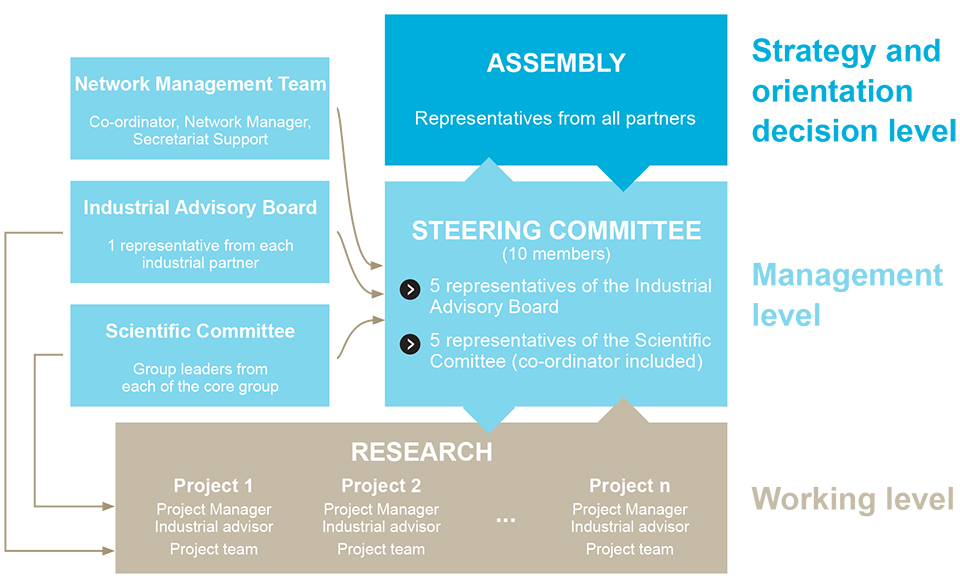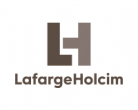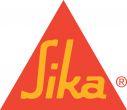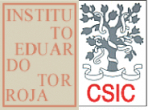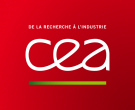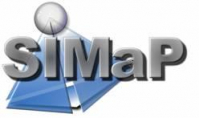About us
Introduction, overview and focus on fundamentals about Nanocem
Just like buildings, research into cement and concrete needs foundations. That is what we do. We do fundamental research into the nano and micro-scale phenomena that govern the performance of cements and concrete.
Nanocem was a consortium of academic and industrial partners, all interested in fundamental research of cement and concrete. Working together, we combined passion with pragmatism, cooperation with independence and long term vision with hands on experience.
We don’t develop products directly. But the combined academic and industrial knowledge that we produce drives the development of new and improved materials and products that are adapted to modern needs, whilst minimising the environmental impact of the construction cycle.
Nanocem was founded in 2004, and has grown to a network of 23 academic and 9 industry partners.There are some 120 academic researchers in the team who, between them, are in the process of managing some 60 PhD and PostDoctoral research projects in related areas. The Nanocem Consortium ran from 2004 until 2020.
Nanocem is now recognised as the world reference for quality research in cementitious materials.
Our aims
Nanocem's aims within the areas of research, education and responsibility
RESEARCH
To grow the basic knowledge needed to develop new cementitious materials, linking features and processes that take place at atomic level and their impact once used in buildings, bridges or other structures, and to disseminate the results of our work.
EDUCATION
To prepare the next generation of researchers, by educating university graduates and providing a platform for future employment in the cement and concrete industry.
RESPONSIBILITY
To help find solutions that will further reduce the environmental impact of cement and concrete.
Activities
What Nanocem did, from organising workshops to acting as a networking body
Nanocem sponsored fundamental research projects, and served as a centralised platform for academic researchers to share results.
We did this by:
- organising workshops and seminars;
- sponsoring research in multi-partner projects;
- acting as a recruitment base for researchers in cementitious materials;
- highlighting the importance of R&D on cementitious materials at the European level;
- acting as a networking body ensuring academic research is relevant.
Organisation
The organisation of Nanocem including the Assembly, Steering Committee, Industrial Advisory Board and Scientific Committee
The Assembly makes the decisions on budget Programme of Activities, including Core Projects and Partner Projects.
The Steering Committee assists by implementing the decisions made, proposing budget and projects; a management team assists the Steering Committee in the daily management of the Network.
The Industrial Advisory Board identifies the research needs and determines the contribution from the industrial partners.
The Scientific Committee proposes and prioritises projects.
Partners
Nanocem's academic and industrial partners
Nanocem comprises 32 academic and industrial partners with an interest in cementitious materials. There are some 120 academic researchers in the team who between them are in the process of managing some 60 PhD and PostDoctoral research projects in the area of fundamental research.
The members of Nanocem collectively have access to a large range of state of the art equipment for the study of cementitious materials.
Contact us
Information on how to contact Nanocem
EPFL
Nanocem office
LMC – IMX – STI
Station 12
CH 1015 – Ecublens/Lausanne
Switzerlandinfo@nanocem.org
Coordinator: Karen Scrivener

Website
Webmaster: Jorge Oliveira

Where to find us
Our Achievements
What difference have we made?
We conduct research at a fundamental level. Yet high levels of industry involvement allow us to focus on solutions that can work in practice and not just in theory.
Our unique model of cooperation between industry and the academic community has led to the identification of common issues, shared knowledge and clear benefits for all those involved. For instance Nanocem has been able to help map the research needs for lower carbon concrete. This guidance helped focus research by companies and third parties. By improving our understanding of cement and concrete, our research leads to innovation that benefits society as a whole.
We run two types of projects – Core Projects and Partner Projects.
- Core Projects
Fundamental, long-term research projects carried out by two or more partners, funded by the resources of the Nanocem Consortium.
Eleven core projects have been completed and five are ongoing covering a wide range of subjects from thermodynamics to kinetics of cement hydration, from admixtures interactions with cement to durability of concrete structures. Most of the results have been published in scientific journals and presented at international conferences. A list of publications is available on the Nanocem website. - Partner Projects
Externally funded projects conducted by academic partners, who contribute by sharing the principal results with Nanocem members.
Over ninety Partner Projects have been completed on an even broader range of subjects.
Our pre-competitive research activities have also included two Marie Curie training networks funded within European Framework Programmes 6 and 7 – NANOCEM "Fundamental understanding of cementitious materials for improved chemical physical and aesthetic performance" and TRANSCEND "Understanding TRANSport for Concrete which is Eco friendly iNnovative and Durable" have been awarded to subgroups of Nanocem.
Between our fourteen Core Projects, the EU funded projects NANOCEM and TRANSCEND, we have trained forty eight fellows in cement and concrete science; many of them continue working in the industry.
The dialogue between partners has inspired ambitious research aimed at answering key questions underlying the behaviour of cementitious materials. We run an average of twenty events per year, from conferences attracting up to a hundred attendees to targeted workshops to discuss selected topics in small groups. Seventy to eighty members of the consortium attend two annual meetings and the majority regards these as outranking most conferences in terms of scientific information gained.
This fundamental, open work has a multiplier effect and will enable innovation that makes a real difference.
Buildings, dams and roads are built with a long term perspective and so is our research. Having to withstand anything from extreme weather to earthquakes, the quality and long term performance of concrete are paramount. Over the past decade our research formed the basis for innovation used on a daily basis. Many of our current research projects are studying some of the most exciting fields in the development of cement and concrete. Our research aims to understand these materials better as to make them more durable, stronger whilst reducing the need for resources and lowering CO2 emissions.

Our first PhD student, Thomas Matschei, developed a unique model to improve the quantification of cement hydration. The most popular cement type contains fine ground limestone that is mixed in with clinker.
This significantly reduces CO2 emissions, but also affects the properties of the cement. Thomas worked with a number of academics to develop a way for manufacturers to predict the hydrate mineralogy of their products that results from varying amounts of limestone content: a database that was developed which continues to grow from the work of other research groups, and is now used widely within the cement community.
This work has been part of the scientific foundation for the development of new standards that will enable the wider adoption of lower carbon cements.
For her PhD thesis, Sandra Galmarini developed atomistic simulation methods to describe cementitious systems at very early age. This promising new modeling technique will in time enable us to understand the microstructure and the macroscopic properties of cementitious materials.
We perfected the analysis of the pore structure of concrete using Proton Nuclear Magnetic Resonance, a technology that is common in the medical field for scans. By teaming physicists with material scientists, we have been able to increase our knowledge of the pore structure which in term will lead to a better understanding of how concrete will behave over time.
Link to us
Nanocem encourages all links to its website. Below are some frequently asked questions regarding linking to us.
Which page should I link to?
We recommend linking to our home page - https://nanocem.org
Is there a standard description of Nanocem ?
If you want to include some text to describe Nanocem, please copy this: 'Nanocem is a consortium of academic and industrial partners, all interested in fundamental research of cement and concrete. Working together, we combine passion with pragmatism, cooperation with independence and long term vision with hands on experience.'
Is there a logo to link from?
Shown below are four ‘linking logos’ which you can include on your website if you choose to. Downloads of these logos are included at the bottom of this page.
| Without tagline version | |
|---|---|
| Medium size | |
| Small size | |
| With tagline version |
|---|
Note: When using these linking logos, please include the alt tag: 'Nanocem: The Industrial Academic Nanoscience Research Network for Sustainable Cement and Concrete'.
What about reciprocal links?
To request a reciprocal link, please contact us and provide details of your organisation/website. All requests will be considered in relation to our Linking Policy.
Can I link to pages other than the home page?
Depending on your site’s audience, you may wish to link to some of our key topic areas or features. Below are some quick links to these pages:
| Page | URL |
|---|---|
| About us | https://nanocem.org/about-us/ |
| Cement & Concrete | https://nanocem.org/cement-concrete/ |
| Our Research | https://nanocem.org/our-research/ |
| European Projects | https://nanocem.org/eu-projects/ |
| Resources | https://nanocem.org/resources/ |
| Members Login | https://extranet.nanocem.org |
What about deep linking?
Our Webmaster makes every effort not to change the URL of pages, so you can link to articles deep within Nanocem website if you choose to. However, please note that content may be moved, deleted or archived at any time so it’s wise to review deep links on a regular basis to prevent ‘404 Page Not Found’ errors.
Do I need to add the ‘www.’ prefix to the URL?
The Nanocem website address does not require the ‘www.’ prefix, however, the link will work either with it (http://www.nanocem.org) or without it (http://nanocem.org). We prefer displaying the link without the ‘www.’ prefix.
Downloads: linking logos
-
Nanocem link logo: tagline, hires
(jpg 80kb)
-
Nanocem link logo: tagline, medium
(jpg 18kb)
-
Nanocem link logo: tagline, small
(jpg 13kb)
-
Nanocem link logo: tagline, transparent
(png 10kb)
-
Nanocem link logo: no tagline, hires
(jpg 30kb)
-
Nanocem link logo: no tagline, medium
(jpg 6kb)
-
Nanocem link logo: no tagline, small
(jpg 3kb)
